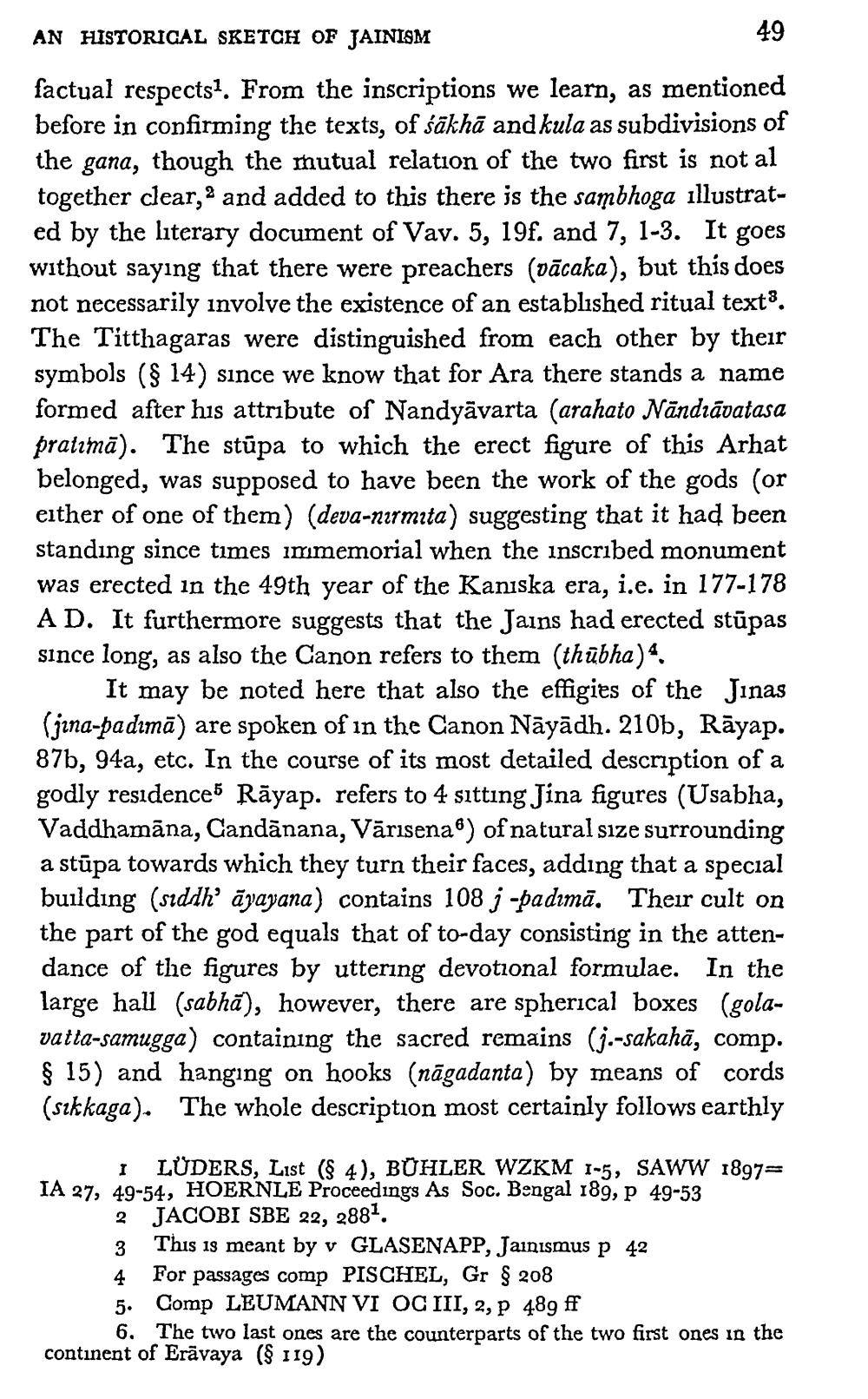________________
49
AN HISTORICAL SKETCH OF JAINISM
2
factual respects1. From the inscriptions we learn, as mentioned before in confirming the texts, of sākhā and kula as subdivisions of the gana, though the mutual relation of the two first is not al together clear, and added to this there is the sambhoga illustrated by the literary document of Vav. 5, 19f. and 7, 1-3. It goes without saying that there were preachers (vācaka), but this does not necessarily involve the existence of an established ritual text3. The Titthagaras were distinguished from each other by their symbols (§ 14) since we know that for Ara there stands a name formed after his attribute of Nandyävarta (arahato Nāndrāvatasa pratimā). The stūpa to which the erect figure of this Arhat belonged, was supposed to have been the work of the gods (or either of one of them) (deva-nırmıta) suggesting that it had been standing since times immemorial when the inscribed monument was erected in the 49th year of the Kaniska era, i.e. in 177-178 AD. It furthermore suggests that the Jains had erected stūpas since long, as also the Canon refers to them (thubha)“.
It may be noted here that also the effigies of the Jinas (jina-padimā) are spoken of in the Canon Nāyādh. 210b, Rāyap. 87b, 94a, etc. In the course of its most detailed description of a godly residence Rayap. refers to 4 sitting Jina figures (Usabha, Vaddhamana, Candānana, Vārisena") of natural size surrounding a stūpa towards which they turn their faces, adding that a special building (siddh' āyayana) contains 108 j-padima. Their cult on the part of the god equals that of to-day consisting in the attendance of the figures by uttering devotional formulae. In the large hall (sabha), however, there are spherical boxes (golavatta-samugga) containing the sacred remains (j.-sakahā, comp. § 15) and hanging on hooks (nāgadanta) by means of cords (sikkaga). The whole description most certainly follows earthly
I
LÜDERS, List (§ 4), BÜHLER WZKM 1-5, SAWW 1897IA 27, 49-54, HOERNLE Proceedings As Soc. Bengal 189, p 49-53
2 JACOBI SBE 22, 2881.
3 This is meant by v GLASENAPP, Jainismus p 42
4
For passages comp PISCHEL, Gr § 208
5. Comp LEUMANN VI OC III, 2, p 489 ff
6. The two last ones are the counterparts of the two first ones in the continent of Erävaya (§ 119)




